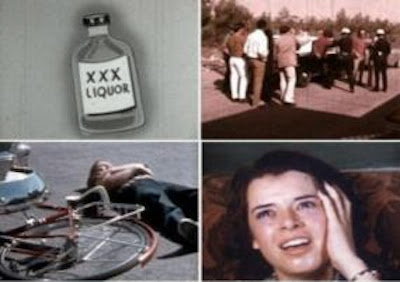
Oddball Films presents Sid Davis: Nightmare Maker, an evening celebrating the career of the master of the educational shock film. Sid Davis films were famously funded by an initial $1000 donation by John Wayne. He went on to produce numerous classics of the educational scare film genre, priding himself by making each one for $1000- a miniscule amount even in its day. From drugs, to speeding, to child-molesters to impaling little girls with scissors, this program touches on all of Davis' favorite topics. We begin where he did, with The Dangerous Stranger (1950), about the threat of child molesters. Davis sold the film to police and schools, reaping $250,000 which he used to fund the rest of the treasures of the evening. How to Protect your Bike (1973) may teach you more about stealing than protecting anything. Freak out on acid with the knee-slapping LSD: Trip or Trap? (1967) and mellow out with marijuana with the "weedheads" and "dope fiends" in Keep Off the Grass (1970). Sammy's got a need for speed that might turn deadly if he's not careful in What Made Sammy Speed (1957). Davis' own daughter gets stabbed with scissors in the parade of household accidents that is Live and Learn (1951). Plus more hilarious shockers in store!
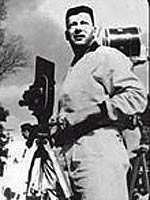
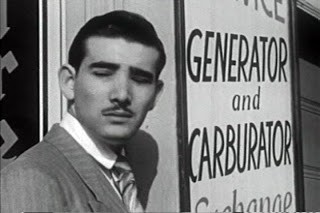
Highlights Include:

How To Protect Your Bike (Color, 1973)
Kooky film by the legendary Sid Davis about protecting your precious chopper from thieves, made with the cooperation of the Santa Monica PD. Filmed on and around the Venice Board Walk in Santa Monica, the wily thief (played by an unknown character actor who’s played the heavy in hundreds of 70s TV shows and movies). Learn all the tricks!
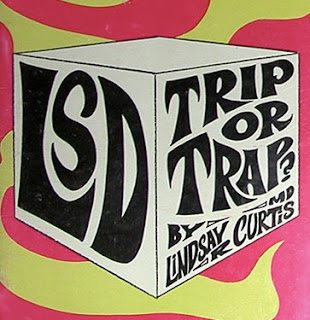
LSD: Trip or Trap? (Color, 1967)
A Sid Davis classic that starts with a fatal crash, and then traces the tragic path that led a good boy to experiment with the latest thrill on the scene- LSD-25. Wild freak-out scenes and good kids pressured into drugs by misguided peers.
Keep Off The Grass (Color, 1970)
Tom's mother discovers a marijuana joint in his room. When his parents confront him, Tom denies being a "dope fiend." He goes down to where the local "weedheads" hang out (a hilarious headshop), is mugged by a desperate band of marijuana addicts, and finally realizes how right his parents were: "keep off the grass!"
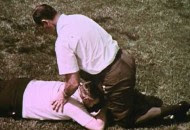
What Made Sammy Speed? (Color, 1957)
Automobile accidents in stunning Eastman color with great southern California street scenes and 1950s cars. A teen-age driver, Sammy Robertson, is killed in a traffic accident as a result of speed. This film explains the steps leading up to the accident: background, attitude, and reasons for poor driving.
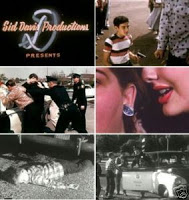
Boys Aware (Color, 1973)
Davis presents four case histories portraying homosexual advances toward young boys. We start off when Ralph shows Billie some pornographic pictures. “What Billie didn’t know was that Ralph was sick”, our narrator says, “a sickness that was not visible like smallpox but no less dangerous and contagious, a sickness of the mind. You see Ralph was a homosexual, a person who demands an intimate relationship with members their own sex.” This over-the-top film, produced in conjunction with the Inglewood, CA Unified School District and Police Department pulls out every homosexual stereotype and scare tactic in the book including the jolting line “That evening Mike traded his life for a newspaper headline”.
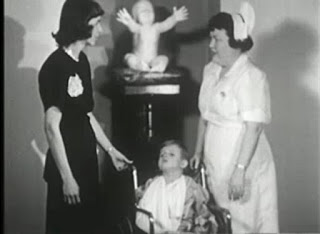
Live and Learn (Color, 1951)
Sid Davis' 1951 film “Live and Learn” illustrates a series of preventable, life-threatening situations in which children frequently find themselves due to their own indiscretion. Most of the accidents are stereotypical childhood accidents and Davis squeezes out sensation in every scene. After each accident occurs, the film whisks the viewer to the hospital forcing the viewer to observe the grave and graphic injuries suffered by each child. This seemingly endless parade of kids falling (Davis’ own daughter starred in the scene where she fell on scissors), getting cut, burned and shooting out other kids eyes with a bb gun, is all part of Davis’s fear-mongering style and what made him such a legendary social guidance
Plus More!


